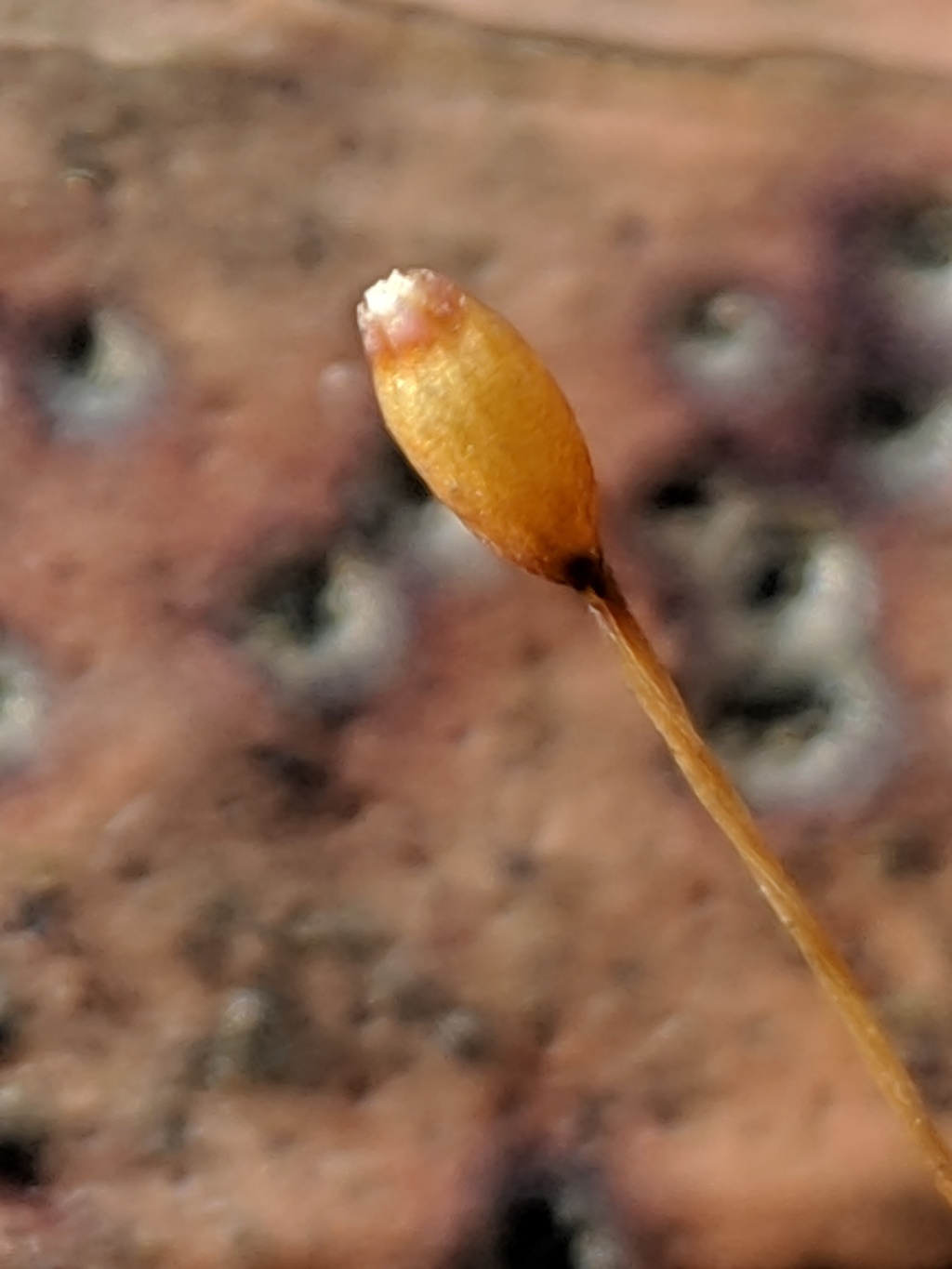Macromitrium microstomum
(Hook. & Grev.) Schwägr.Autoicous. Asexual propagules absent. Mats on trees, dull olive-green, 4–6 mm tall. Stems black, tomentose with brown rhizoids where in contact with substrate. Branch leaves funiculate, in spirals, strongly twisted-contorted or apices incurled when dry, ligulate to ligulate-lanceolate, 1.2–2.1 mm long, 0.25–0.3 mm wide, carinate; apex acute to short-acuminate, some short-cuspidate; costa ending below apex or short-excurrent; margin entire, plane or recurved on one side toward base, without a border; laminal cells near apex, 4–13 μm long, 5–10 μm wide, smooth, unistratose, becoming more elongated gradually toward base; midlaminal cells rectangular or quadrate, 5–25 μm long, 5–7 μm wide; basal laminal cells rectangular or vermicular, 24–75 μm long, 6–8 μm wide, smooth. Seta 7–12 mm long, brown to yellow-brown, smooth, twisted clockwise. Calyptra glabrous. Capsule erect, narrowly ovoid to oblong, 1–1.7 mm long, straight, brown. Peristome single; exostome teeth 16, erect to inflexed; endostome absent. Operculum rostrate or oblique-rostrate, 0.4–0.75 mm long.
OtP, EGL, WPro, HSF, OtR, MonT, HFE, VAlp. New Zealand, Pacific Islands including Hawaii, Malesia and Central America. In the Otways, Yarra Ranges and throughout Gippsland in rainforest and wet-sclerophyll forest, or rarely among rock outcrops.
 Spinning
SpinningSynonyms
Vitt, D.H.; Ramsay, H.P. (2006). Macromitrium. Flora of Australia 51: 191–218.


